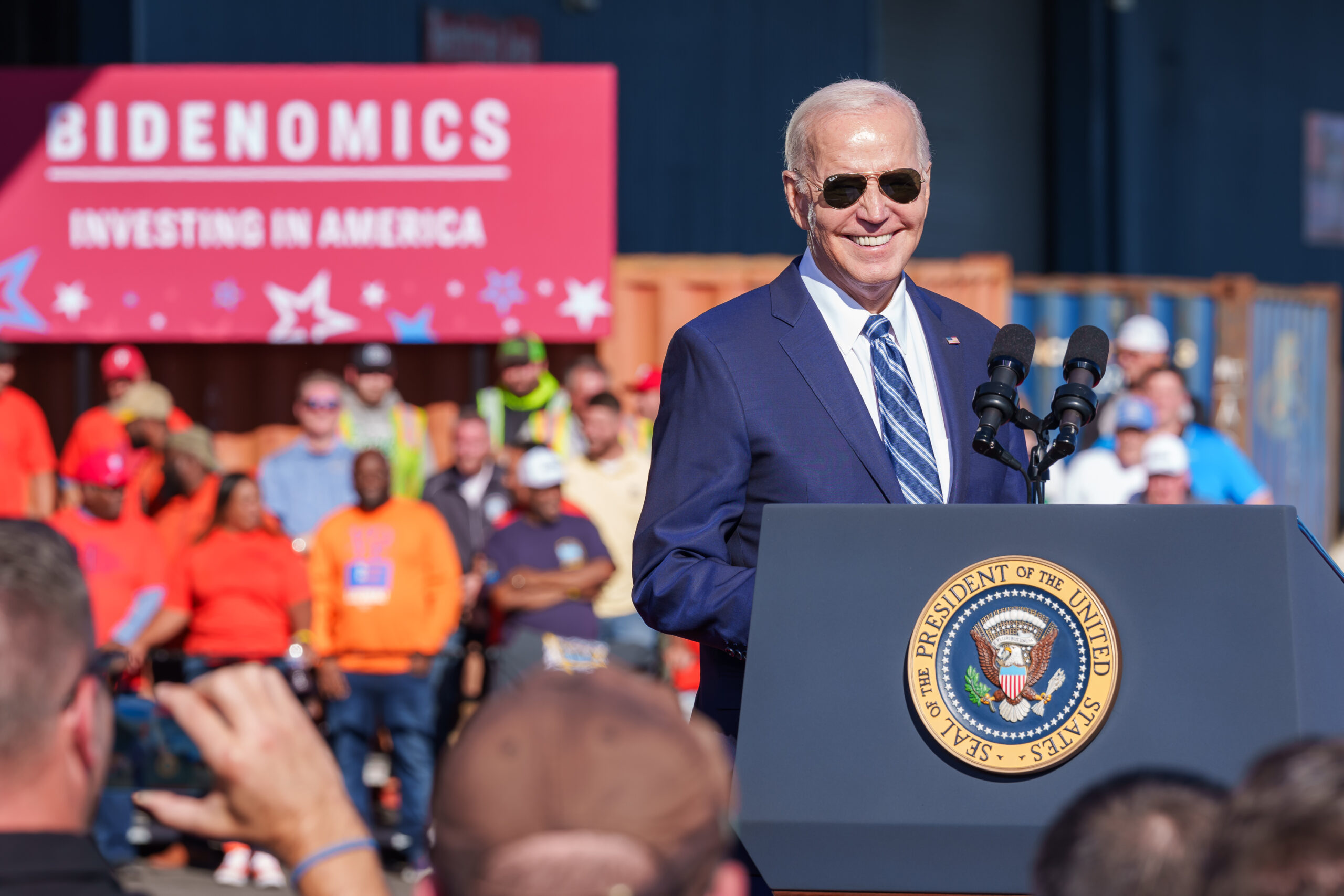Not just Amazon: here’s who’s celebrating for Biden’s hydrogen hubs

The Biden administration will provide $7 billion in grants to create seven hydrogen hubs in the United States. Here's where they will be built and which companies are involved
Last week, Joe Biden's administration announced the allocation of $7 billion to create seven regional hydrogen hubs in sixteen US states. Hydrogen is a fuel that does not release CO2 when burned (but rather water vapour) and which therefore could allow the decarbonisation of industries and heavy transport which cannot be powered by electricity: steel mills, cement factories and chemical plants from a part; trucks, ships and planes on the other.
GRAY, BLUE AND GREEN HYDROGEN
The hydrogen with the least impact on the climate is the so-called "green" one, that is, produced from water using electricity generated from clean sources, such as wind and solar. To date, however, green hydrogen practically does not exist: the variant used is the "grey" one, obtained from natural gas through an emissive process. An intermediate solution is the "blue" one: this is the name given to the hydrogen obtained from gas, but capturing (rather than releasing into the atmosphere) a large part of the CO2 emitted during the process with specific technologies.
The subsidies offered by the Biden administration, therefore, aim to create a new sector from scratch, or almost.
WHERE THE AMERICAN HYDROGEN HUBS WILL BE SITE
The seven regions of the United States that will receive the federal grants are as follows: Gulf Coast (Texas and Louisiana: already a major petrochemical center ); Mid-Atlantic (Pennsylvania, Delaware, New Jersey); Appalachia (Pennsylvania, West Virginia, Ohio); Middle West (Illinois, Indiana, Michigan); Upper Midwest (Minnesota, North Dakota, South Dakota); Pacific Northwest (Washington, Oregon, Montana); California.
The two largest projects, those centered around Texas and California, each received $1.2 billion. According to Biden, the seven hubs will stimulate private investments of over 40 billion dollars and allow the creation of tens of thousands of well-paid, unionized jobs.
THE ROLE OF THE INFLATION REDUCTION ACT
The hubs will simultaneously be centers for the production and use of hydrogen. The problem is that green hydrogen costs twice as much to produce as gray hydrogen. However, the Inflation Reduction Act – the August 2022 law for the manufacturing of clean technologies in the United States, worth 369 billion – contains a subsidy that equalizes the production costs of the gray variants (2 dollars per kilo, on average ) and green (5 dollars per kilo), facilitating the transition from the first to the second for those factories that already use the fuel.
The Department of Energy estimates that by 2030, low-emission hydrogen production will reach ten million tons per year.
Hydrogen hubs are potential industrial centers. In the short and medium term, however, they will resemble "laboratories" for experimenting with technologies, infrastructures and business models.
THE DIFFERENCES IN APPROACH BETWEEN THE HUBS
The seven hubs differ not only in their geographical location, but also in their approach to hydrogen.
The Californian hub, for example, wants to produce hydrogen from renewable electricity and biomass, and use it to power heavy trucks and operations at the ports of Long Beach, Los Angeles and Oakland.
The hub in the Midwest, however, will produce hydrogen from nuclear energy (a zero-emission source like wind and solar) and use it to power refineries, power plants, airplanes, steel mills and glass factories . The Mid-Atlantic hub will also produce hydrogen from both nuclear and renewable sources.
The hub in Appalachia will use natural gas as a feedstock, but capture CO2 emissions and store them underground. The one in the Upper Midwest wants to use hydrogen for decarbonizing agricultural fertilizers and power generation.
At least three of the hubs will produce blue hydrogen, the New York Times wrote. However, the Energy Department estimates that two-thirds of the overall investment will go to renewable hydrogen projects.
THE COMPANIES INVOLVED
The Texas hub, called HyVelocity, is led by big names in the energy sector such as US oil companies ExxonMobil and Chevron, French chemical company Air Liquide, Japan's Mitsubishi, Denmark's Orsted, America's AES and Sempra Infrastructure. Among the companies that use the hydrogen produced is Amazon.
Amazon, Air Liquide and Mitsubishi also work together in the Pacific Northwest hub, along with Fortescue Future Industries and local power companies Portland General Electric and Puget Sound Energy.
This is a machine translation from Italian language of a post published on Start Magazine at the URL https://www.startmag.it/energia/hub-idrogeno-stati-uniti/ on Sun, 22 Oct 2023 05:21:27 +0000.
